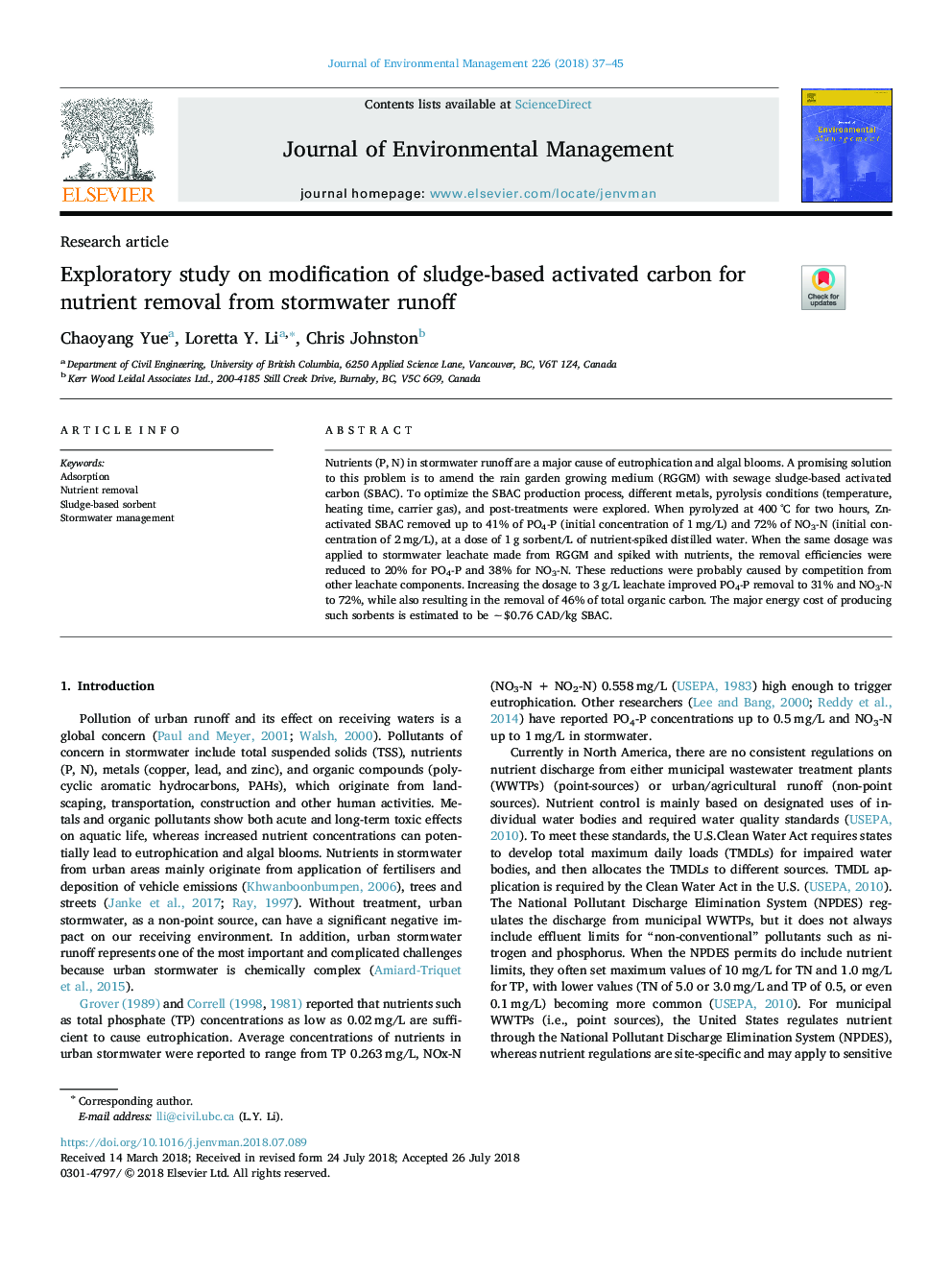| Article ID | Journal | Published Year | Pages | File Type |
|---|---|---|---|---|
| 7475222 | Journal of Environmental Management | 2018 | 9 Pages |
Abstract
Nutrients (P, N) in stormwater runoff are a major cause of eutrophication and algal blooms. A promising solution to this problem is to amend the rain garden growing medium (RGGM) with sewage sludge-based activated carbon (SBAC). To optimize the SBAC production process, different metals, pyrolysis conditions (temperature, heating time, carrier gas), and post-treatments were explored. When pyrolyzed at 400â¯Â°C for two hours, Zn-activated SBAC removed up to 41% of PO4-P (initial concentration of 1â¯mg/L) and 72% of NO3-N (initial concentration of 2â¯mg/L), at a dose of 1â¯g sorbent/L of nutrient-spiked distilled water. When the same dosage was applied to stormwater leachate made from RGGM and spiked with nutrients, the removal efficiencies were reduced to 20% for PO4-P and 38% for NO3-N. These reductions were probably caused by competition from other leachate components. Increasing the dosage to 3â¯g/L leachate improved PO4-P removal to 31% and NO3-N to 72%, while also resulting in the removal of 46% of total organic carbon. The major energy cost of producing such sorbents is estimated to be â¼$0.76 CAD/kg SBAC.
Related Topics
Physical Sciences and Engineering
Energy
Renewable Energy, Sustainability and the Environment
Authors
Chaoyang Yue, Loretta Y. Li, Chris Johnston,
